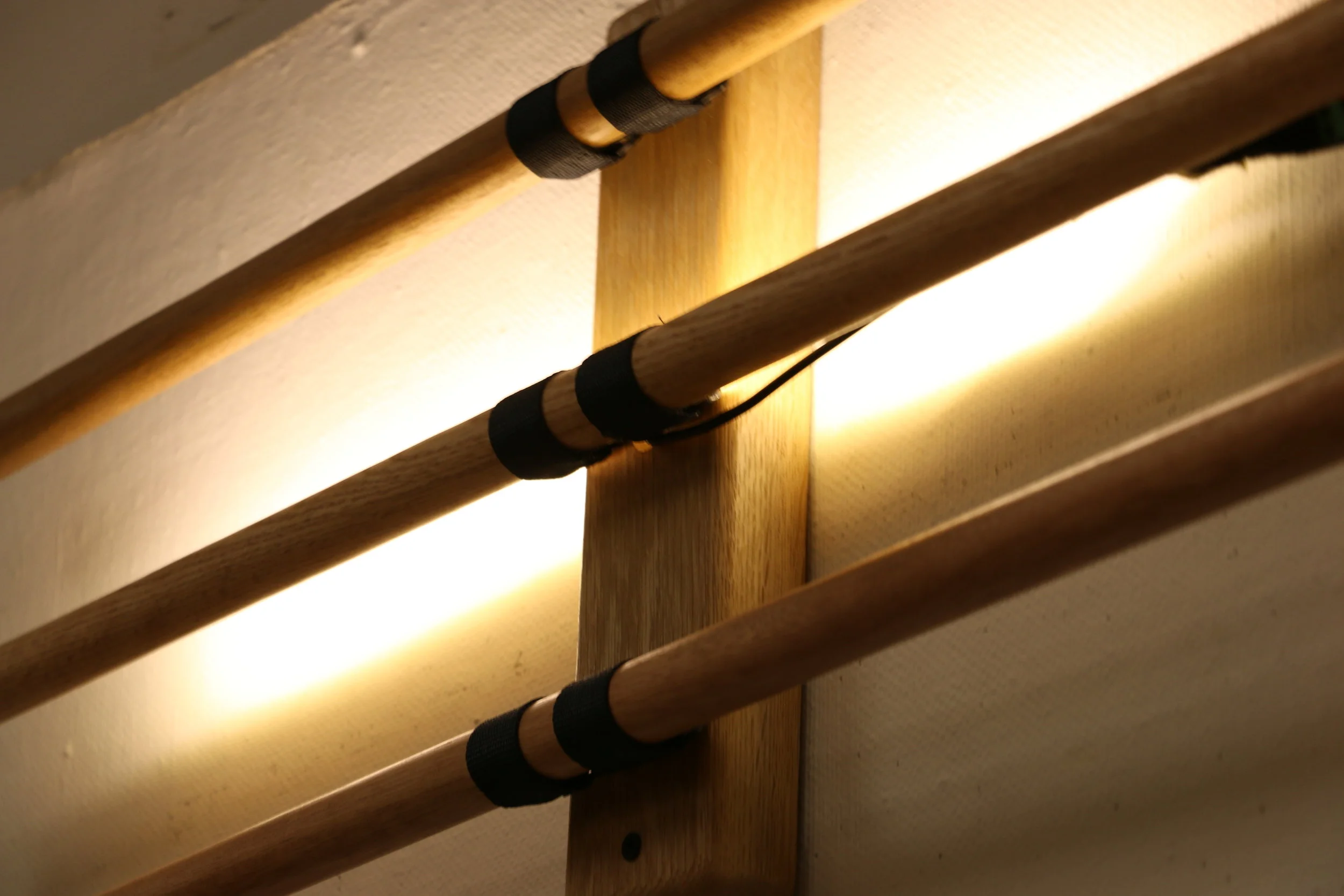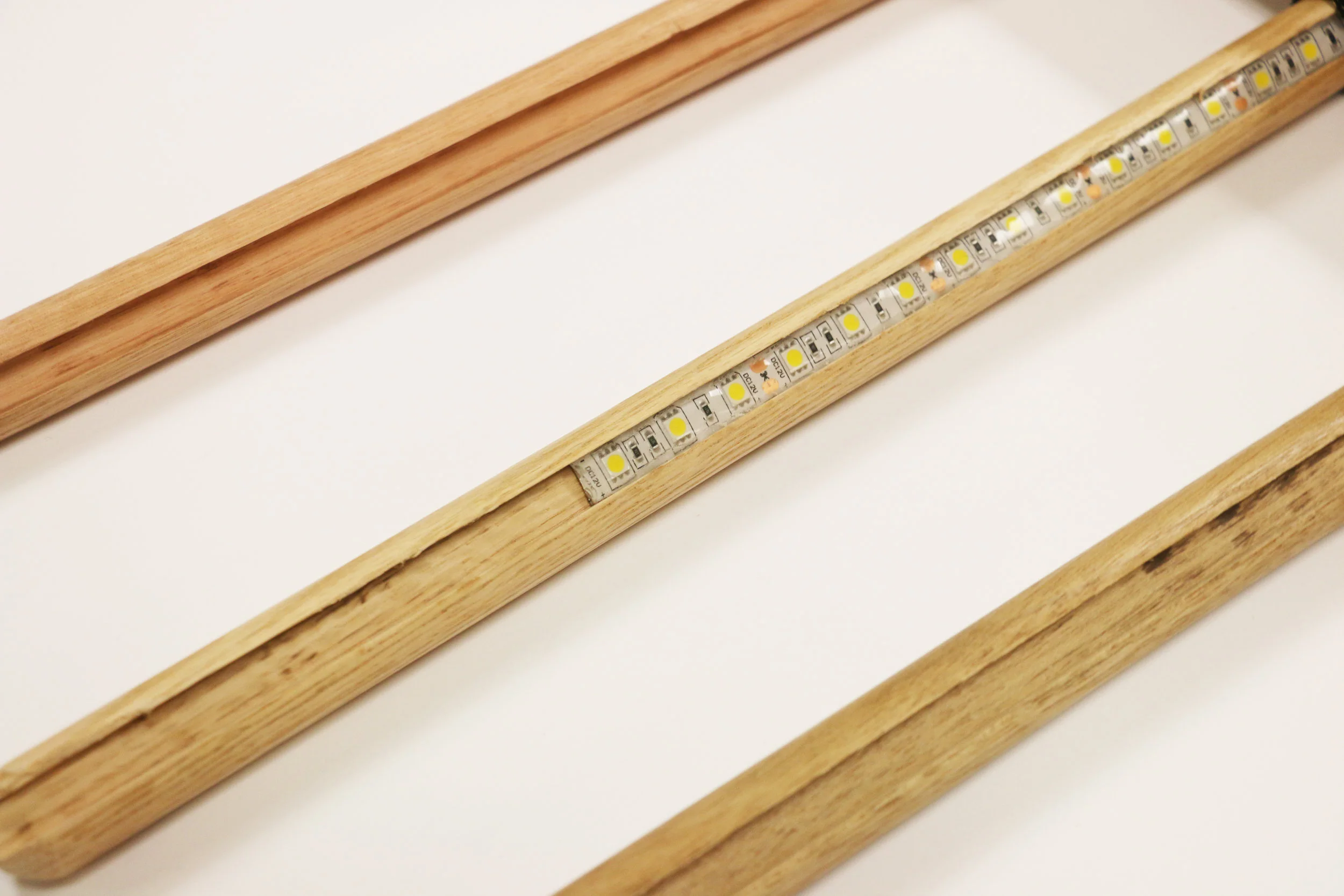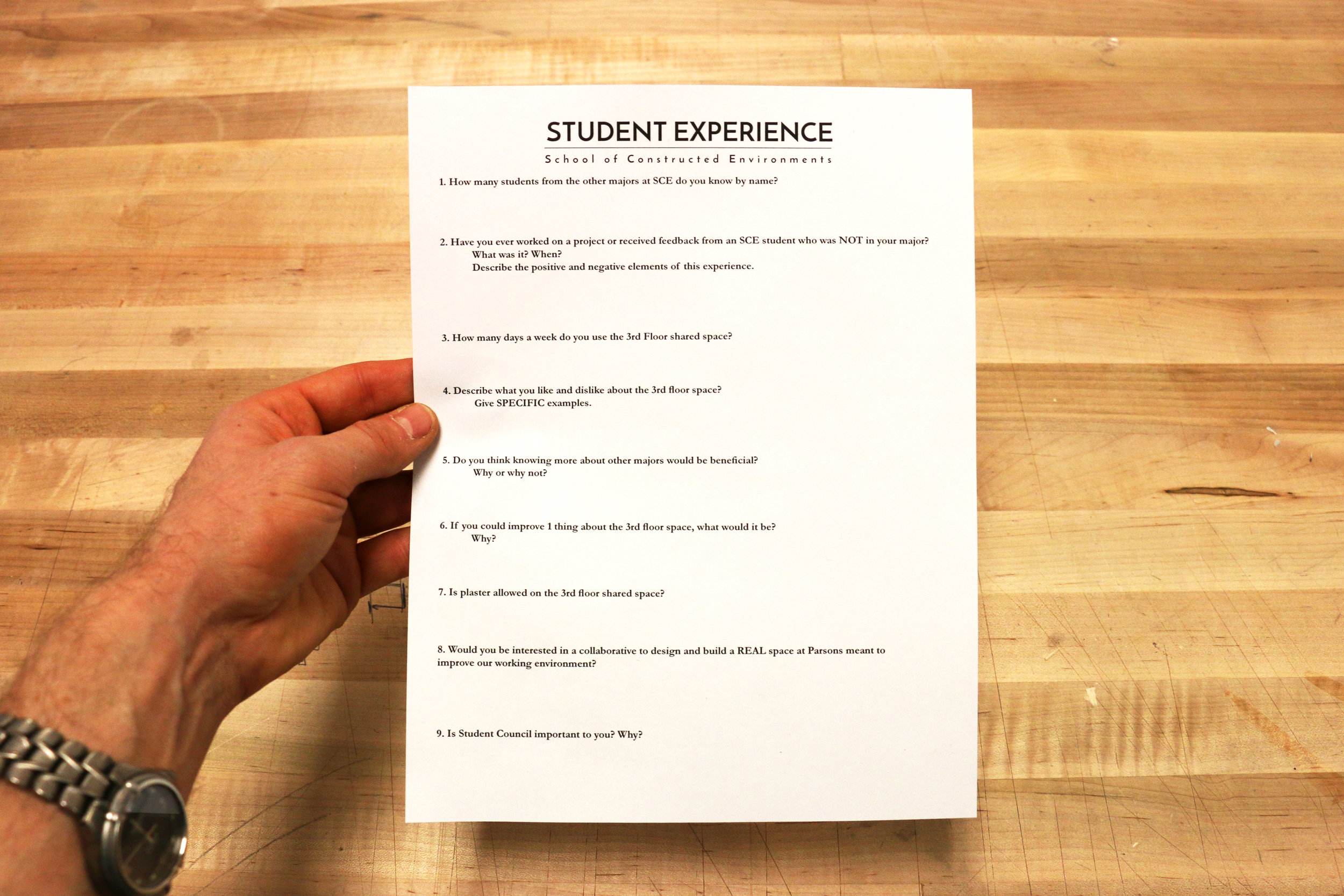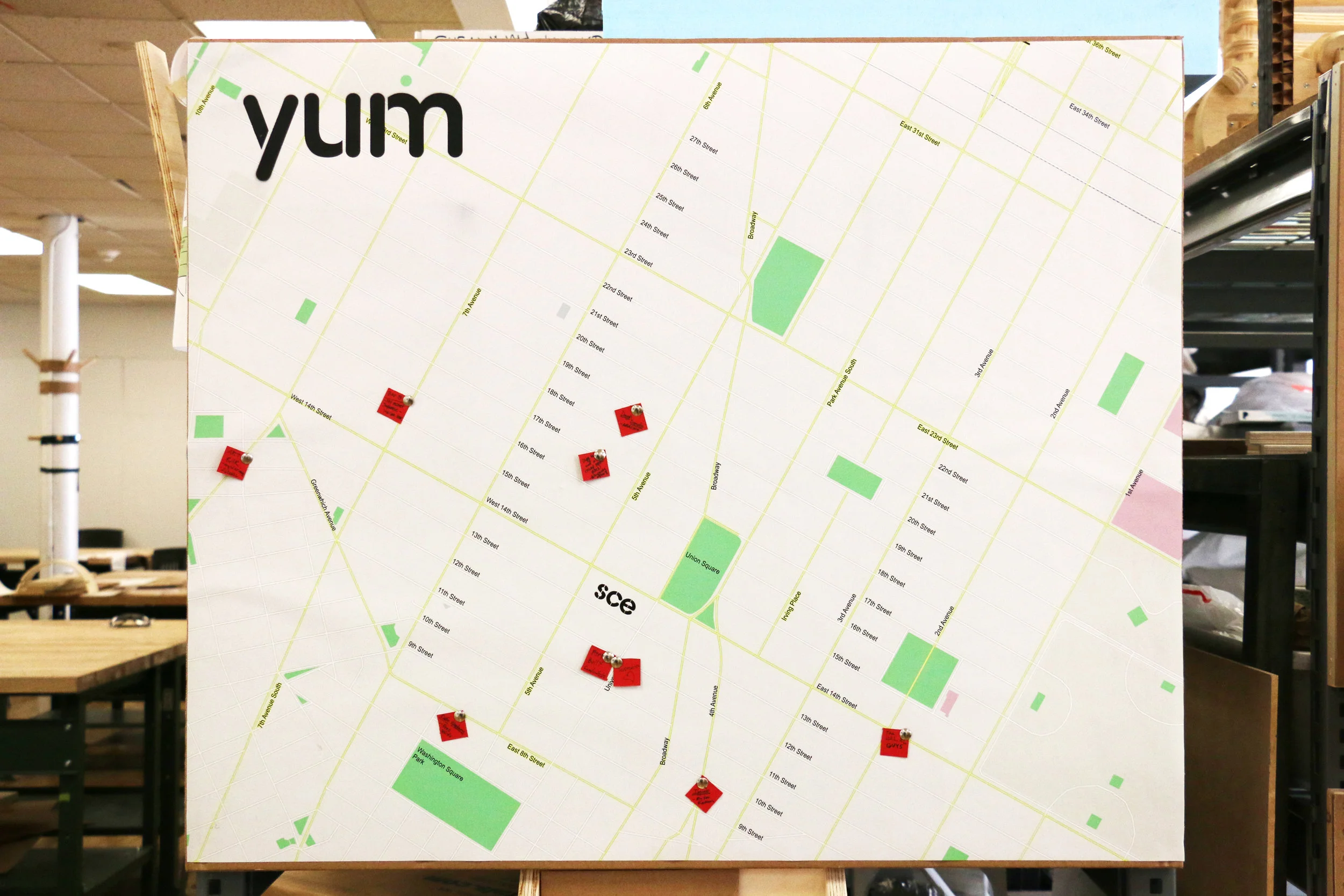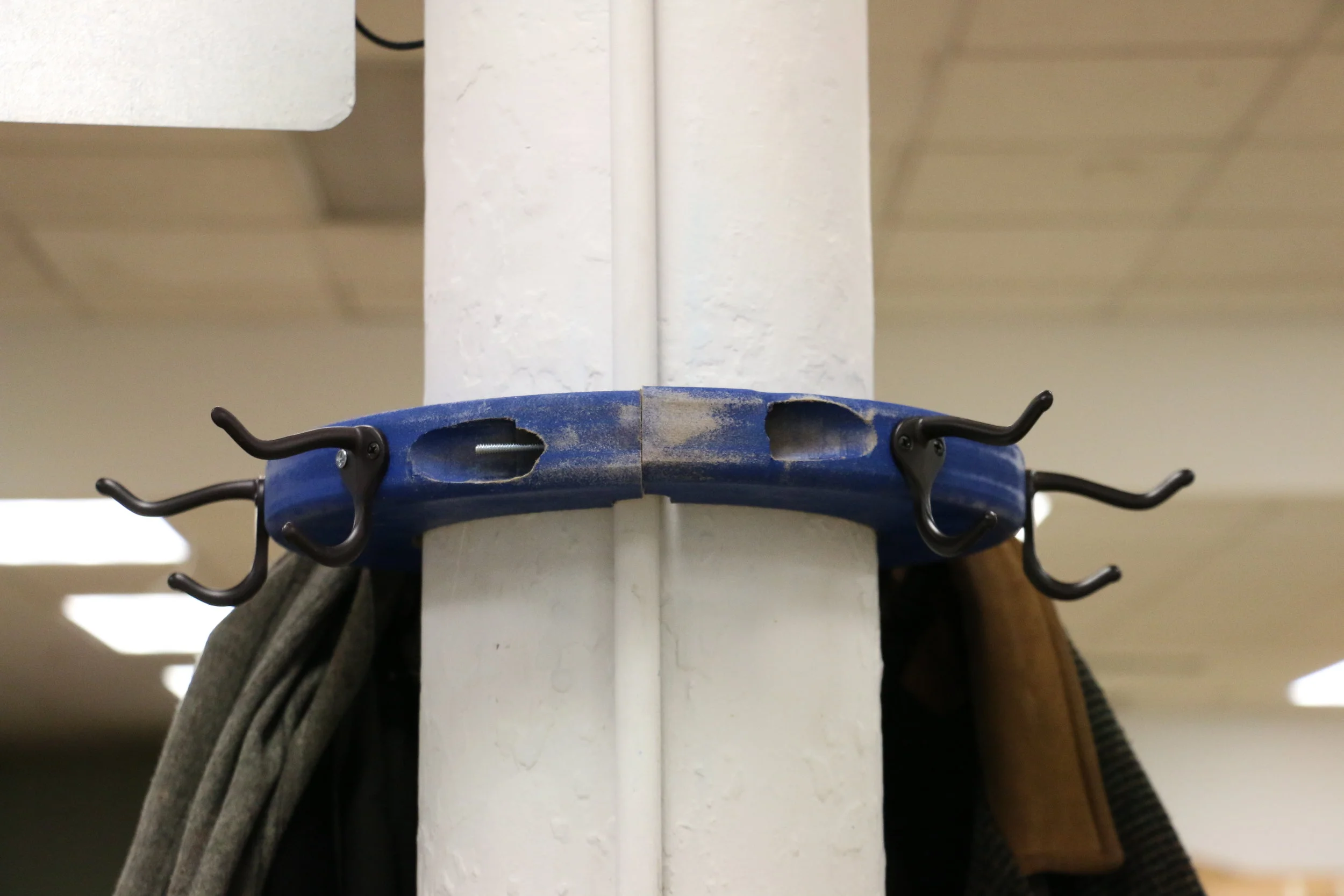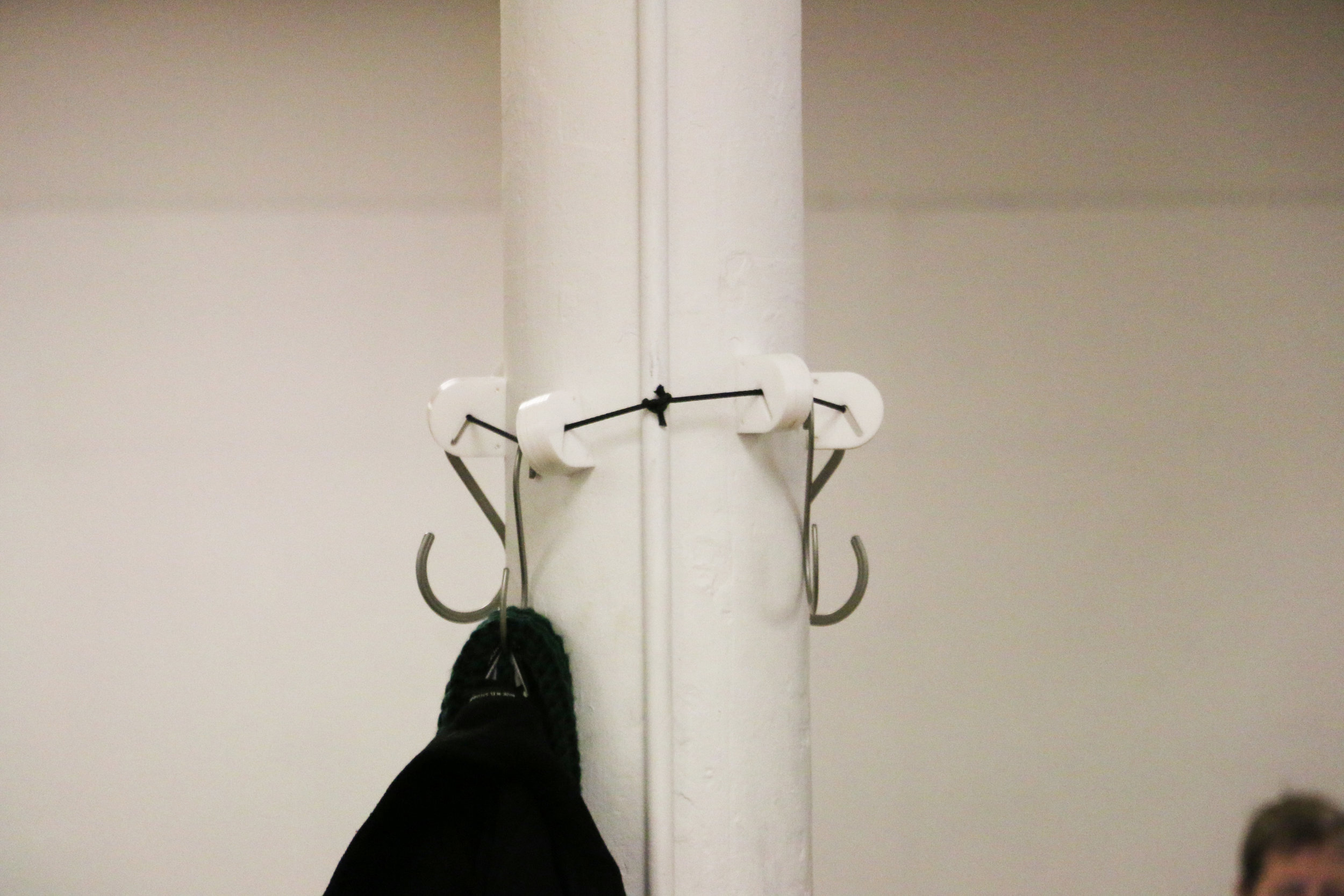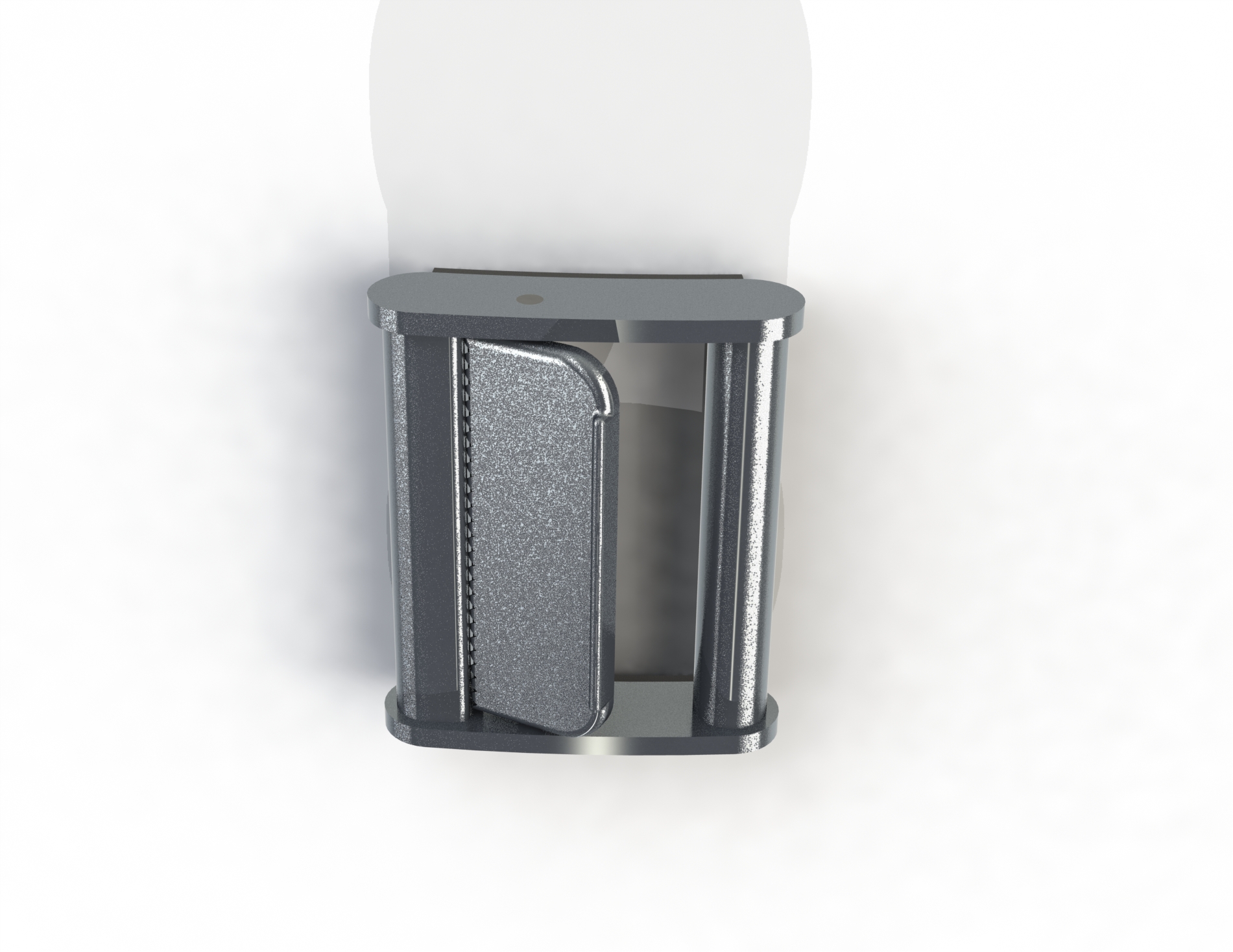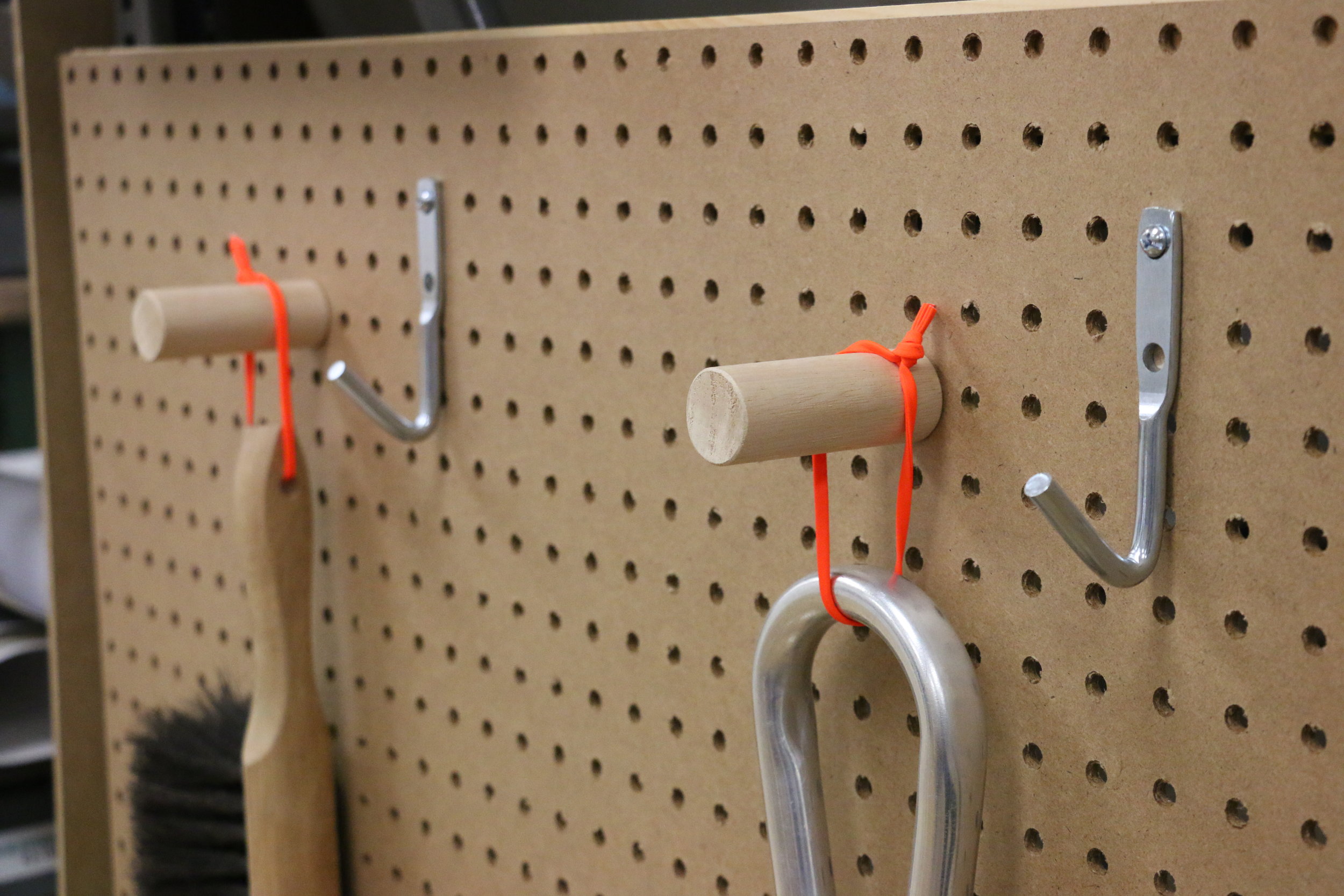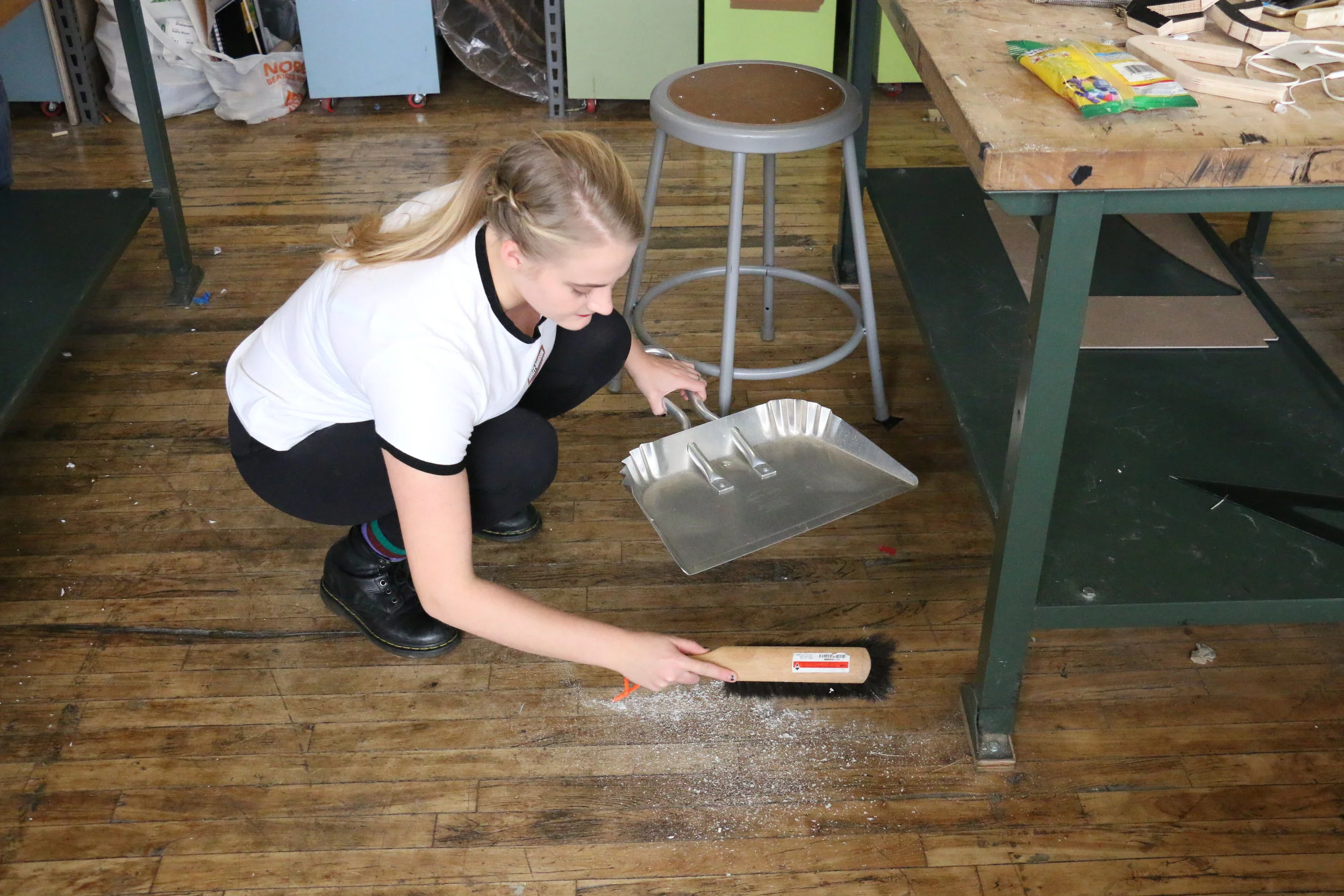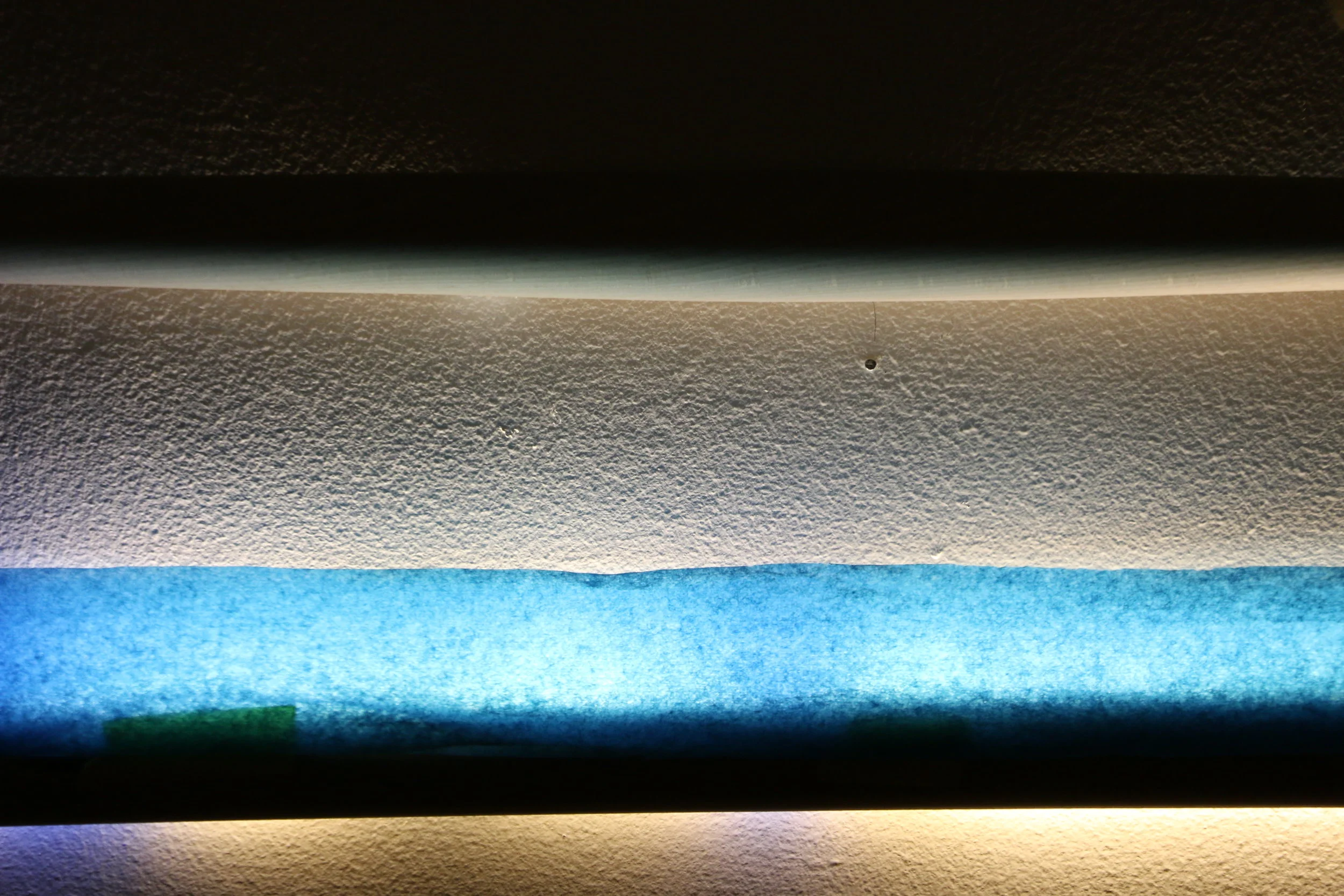Inhabit Parsons
A collection of four objects working to build an empathetic working environment for the creatively diverse communities in Parsons shared work spaces.
The highly considered aesthetic and color of the Parsons Brush and Dustpan encourage cleaning and help to beautify the space. Their minimal construction of oak and sheet metal helps lower cost and allows for recyclability. The Parsons Coat Hook system utilizes the space's empty columns to create focal points of engagement and keep wall spaces clear, which are needed for pin up critiques. A simple nylon belt and buckle lash the CNC'd oak hooks to the columns to create secure, yet adjustable coat racks. The Parsons "Street" Signs share this assembly system except for an adapted bracket to accommodate standard aluminum street signs. The Parsons Track Light draws upon the wooden/dowel design language of the Brush and Dustpan to create an ambient lighting system that is both aesthetically warm, yet customizable and energetic. The light's horizontal design allows it to live within the thin strip of space beneath the ceiling to keep wall space clear.
Brief: Design a product that uplifts the human spirit
Duration: 2 Months
Presentation Model
Research + Process
Building Community
My experience as President of Student Council at Parsons made me aware of two main factors regarding some of our shared spaces:
1. They were inadequate as workspaces
2. They were inadequate as socially interactive spaces
Results
50% Knew Less than 5 People from Other Majors
50% Did Not Know the Locations of All Facilities
90% Wanted More Opportunities for Collaboration with Other Majors
Collecting Data
To gain insight into how students used the shared spaces at Parsons, I personally distributed over 150 surveys to students of all years and disciplines.
An Unwelcome Environment
Students described many facilities as "dirty," "unfriendly," and "lacking adequate space."
What became clear was that the third floor was in actuality a room of strangers working side-by-side.
Ideation
My goal was to generate any and all possibilities to bring people together into shared empathetic experiences. Some ideas focused on personal reflection, while others brought multiple people together.
Bringing People Together
My first attempt to create a friendlier environment was two boards where students could share projects and favorite local eateries. My goal was to create an avenue for more cross-disciplinary interaction.
Conclusion
My feedback overall was positive. Professors loved the idea, but participation among students remained extremely low. It became clear that the best way to develop this idea further would be to create a more cohesive Parsons social media platform.
Moving On
The d.school at Stanford has done extensive research to develop the concept that one can help create a specific working and social culture by designing the space in which it inhabits.
"Space transmits culture."
Scott Doorley & Scott Witthoft
Discovered Design Opportunities at Parsons
Following my discovery of the d.school's research on the connection between space design and inhabiting work culture, I went in search of design opportunities in Parsons to enhance the shared work spaces.
1. No Coat Hooks
2. Complicated Signage
3. No Cleaning Supplies
4. Harsh Lighting
Coat Hook Development
Since wall space had to be kept clear for pin-ups and reviews, I used the building's columns as a base structure. Furthermore, all designs had to be temporary and removable since Parsons frequently redesigns and reconfigures its interior layout.
After testing multiple designs, the nylon strap direction proved most promising for creating minimal, durable, removable, and adjustable designs.
Belt Buckle Iterations
Sign Development
Using standard street signs as a foundation, I worked to create a system that would coincide with the coat hook design.
Sign Graphic Design
Working within the New School's existing branding to create a cohesive aesthetic within the school .
Dustpan Development
Having easy access to cleaning tools proved to have an immediate effect on students' willingness to clean up after themselves.
Light Development
Soft, ambient light and diversity of lighting sources creates positive psychological effects on workers. Since all wall space had to remain clear for pinups, placing filters on overhead lighting would be too expensive, and hanging pendant lights over tables was unpopular among faculty, I was forced to work within the narrow horizontal strip of wall space below the ceiling.
These restrictions forced my design iterations to be narrow and inexpensive, while simultaneously providing dynamic visual energy and soft ambient light.
Final Designs
Feedback From Mockups & Prototypes
"It feels cozy."
Christine, Interior Design Senior
"The space is more user friendly."
Nicholas, Interior Design Junior
"[The installations] make me feel warm."
Angelo, Architecture Junior



















